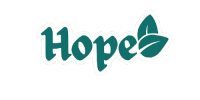In today’s increasingly digital world, LinkedIn has emerged as a powerful platform for professionals to network, share expertise, and build their personal and organisational brands. For hospital administrators, LinkedIn marketing offers unique opportunities to connect with healthcare professionals, stakeholders, and decision-makers while positioning their hospital or healthcare facility as a leader in the industry.
Whether you’re looking to attract top talent, foster collaborations, or increase awareness of your hospital’s services, a well-executed LinkedIn marketing strategy can help you achieve your goals. In this guide, we will explore practical tips and strategies for hospital administrators to maximise their LinkedIn presence and make meaningful connections within the healthcare sector.
Curious how your clinic or practice could perform online? Get a free preview of your digital presence and see what’s working well and where there’s room to grow.
Understanding the Value of LinkedIn for Hospital Administrators
LinkedIn is more than just a job search site; it is a professional networking platform that offers a targeted space to share insights, engage with peers, and cultivate a reputation as an industry expert. For hospital administrators, LinkedIn marketing is invaluable for:
- Building relationships with healthcare professionals, suppliers, and policymakers
- Showcasing hospital achievements, innovations, and community impact
- Recruiting qualified candidates and retaining staff by demonstrating your hospital’s values and culture
- Keeping up-to-date with healthcare trends, regulations, and news
- Establishing partnerships and fostering collaborative initiatives
By leveraging LinkedIn’s professional audience, hospital administrators can amplify their voice and position their hospital at the forefront of healthcare leadership.
Optimising Your LinkedIn Profile as a Hospital Administrator
Your LinkedIn profile is often the first impression you make on potential connections. A well-optimised profile reflects professionalism, authority, and credibility.
- Use a high-quality, professional profile picture and a customised banner image reflecting your hospital or healthcare environment
- Write a compelling headline that includes your role and key strengths (e.g., “Hospital Administrator | Healthcare Operations Expert | Patient-Centred Leadership”)
- Craft a summary that highlights your experience, achievements, and vision for healthcare delivery
- Detail your work experience with measurable outcomes and leadership successes
- Showcase relevant certifications, awards, and endorsements
- Include media such as presentations, videos, or articles to demonstrate expertise
A polished profile encourages trust and invites engagement from colleagues and stakeholders.
Building and Growing Your Network Strategically
Networking is at the heart of LinkedIn marketing. For hospital administrators, connecting with the right audience is crucial.
- Connect with healthcare professionals such as doctors, nurses, allied health staff, and executives within and beyond your hospital
- Engage with suppliers, vendors, and service providers who support healthcare operations
- Follow industry thought leaders, healthcare organisations, and policy groups to stay informed and participate in discussions
- Personalise connection requests with a brief introduction explaining why you wish to connect
- Join relevant LinkedIn groups centred on healthcare management, hospital administration, and healthcare innovation
Building a strong network broadens your reach and opens doors to collaborative opportunities.
Creating Valuable Content to Establish Thought Leadership
Regularly sharing relevant and insightful content helps hospital administrators position themselves as thought leaders and increases visibility.
- Post updates about hospital milestones, new initiatives, and patient success stories (while respecting confidentiality)
- Share articles and reports on healthcare management trends, policy changes, and technology advancements
- Write original LinkedIn articles or blog posts discussing challenges and solutions in hospital administration
- Use multimedia formats such as videos or infographics to make content more engaging
- Highlight community involvement and corporate social responsibility efforts
- Encourage colleagues and staff to engage with and share your posts to extend reach
Consistent, value-driven content builds credibility and fosters meaningful engagement.
Leveraging LinkedIn Analytics to Refine Your Strategy
LinkedIn offers analytics tools that provide insights into your audience demographics, post performance, and engagement levels.
- Monitor which types of content receive the most views, likes, comments, and shares
- Identify peak times when your audience is most active
- Track follower growth and profile visits to measure influence
- Use these insights to tailor content topics, formats, and posting schedules
- Experiment with different post types and messaging to find what resonates best with your network
Data-driven adjustments ensure your LinkedIn marketing efforts remain effective and aligned with your goals.
Utilising LinkedIn Ads for Targeted Outreach
For hospital administrators aiming to reach specific audiences quickly, LinkedIn Ads can be a powerful tool.
- Promote job vacancies to healthcare professionals with relevant skills and experience
- Advertise hospital services or health campaigns to targeted demographic groups
- Sponsor thought leadership content to increase visibility among decision-makers
- Use LinkedIn’s precise targeting options including job title, location, industry, and company size
- Set clear objectives such as website visits, leads, or brand awareness and monitor ad performance closely
Paid campaigns complement organic marketing efforts and accelerate audience growth.
Engaging Your Network Through Meaningful Interactions
LinkedIn is a social platform; active engagement is essential to build relationships and maintain visibility.
- Respond promptly and thoughtfully to comments on your posts
- Comment on posts from peers, thought leaders, and industry groups to share insights or ask questions
- Send personalised messages to new connections to initiate conversations
- Recognise colleagues’ achievements with endorsements and recommendations
- Participate in LinkedIn group discussions to demonstrate expertise and network with like-minded professionals
Meaningful interactions cultivate a community that supports your professional objectives.
Staying Compliant with Healthcare Regulations and Ethics
As a hospital administrator, it is crucial to ensure that your LinkedIn marketing complies with healthcare privacy laws and ethical guidelines.
- Avoid sharing confidential patient information or sensitive operational details
- Ensure that any testimonials or case studies have proper consent and anonymisation
- Represent your hospital and profession honestly and avoid exaggerated claims
- Follow organisational social media policies and regulatory standards applicable in your country (such as GDPR in the UK and EU)
- Keep up to date with changes in healthcare marketing regulations
Ethical marketing maintains trust and protects your hospital’s reputation.
Conclusion
LinkedIn marketing presents a valuable opportunity for hospital administrators to expand their professional influence, build strategic partnerships, and showcase their hospital’s commitment to excellent healthcare delivery. By optimising your profile, growing your network strategically, sharing valuable content, and engaging authentically, you can harness LinkedIn’s full potential to advance your career and your institution’s goals.



